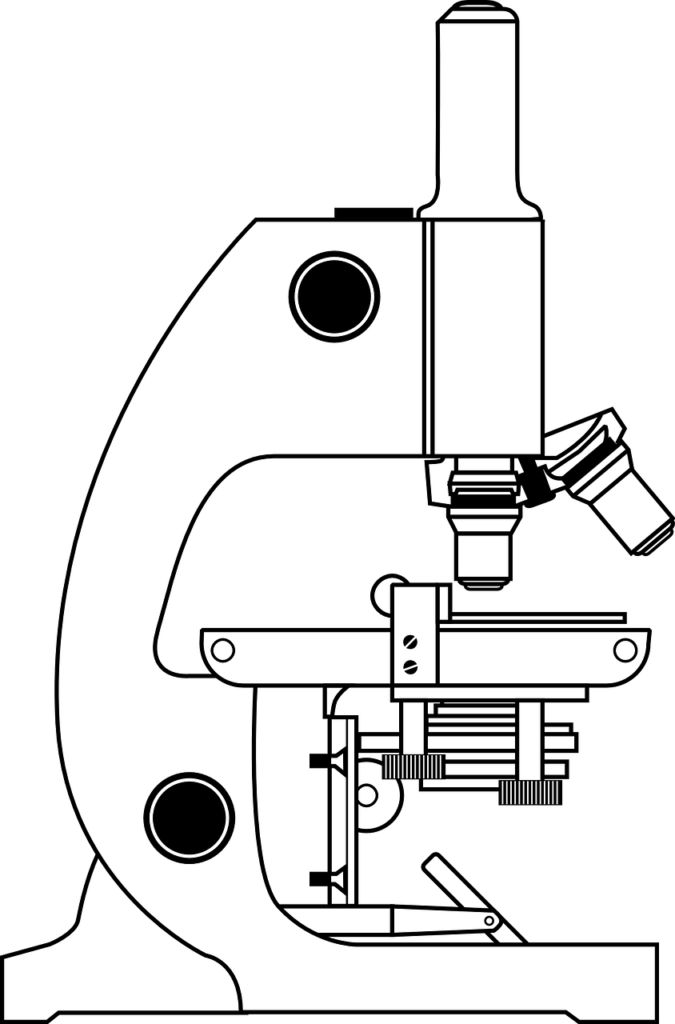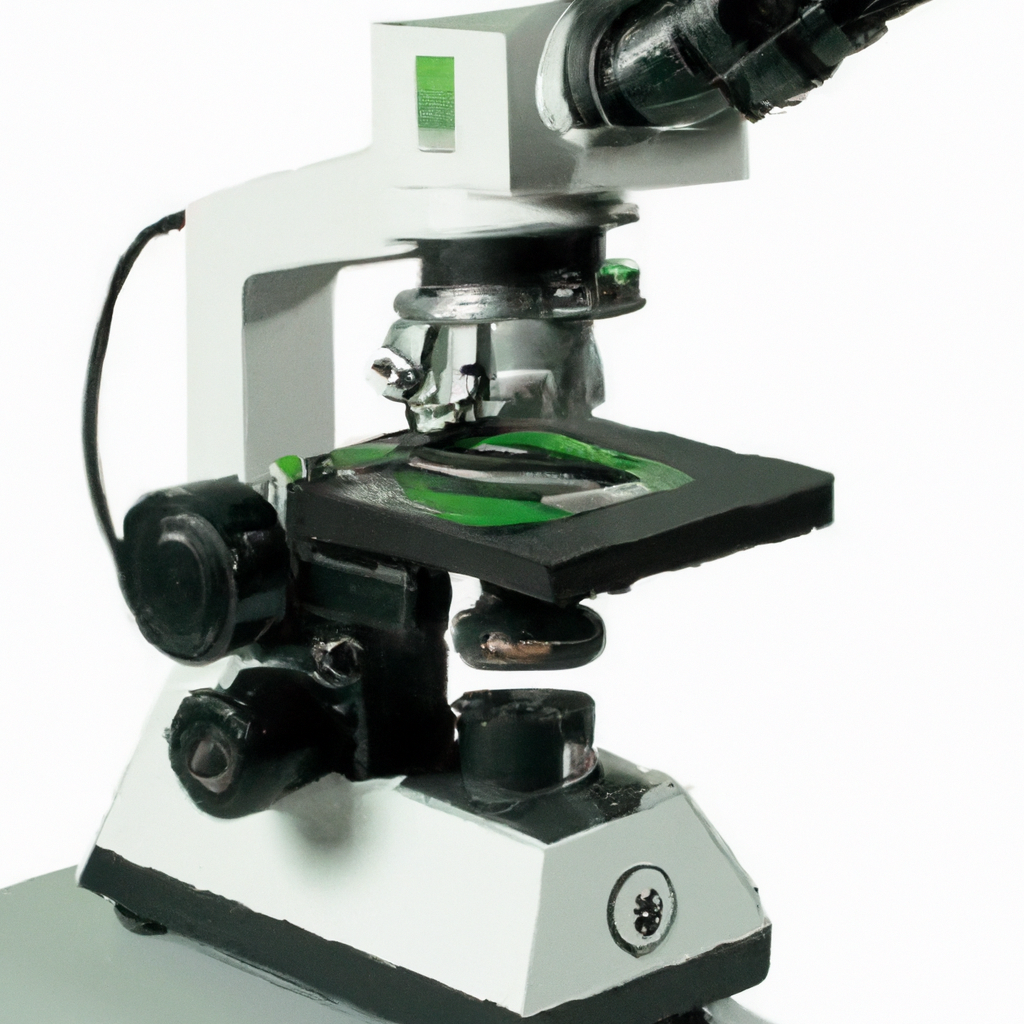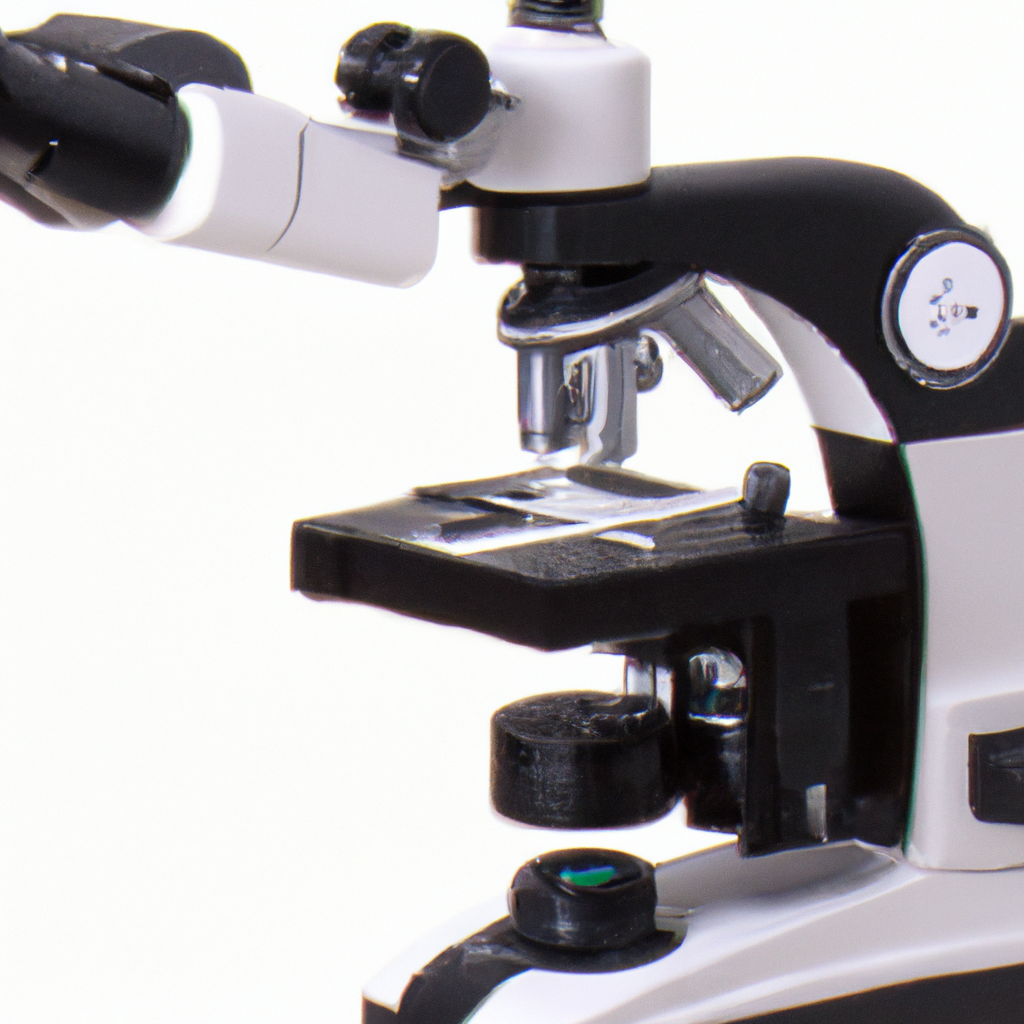Imagine being able to explore the microscopic world with astonishing detail and precision. With a digital microscope, the possibilities seem endless as you embark on a journey to uncover the hidden beauty that lies beyond the naked eye. From examining intricate biological structures to analyzing the quality of materials, the magnification power of a digital microscope unveils a whole new dimension. Get ready to discover a realm of tiny wonders that will leave you in awe and ignite your curiosity like never before.

Digital Microscope Basics
Introduction to Digital Microscopes
Digital microscopes are modern tools used in various fields, including research, education, and industrial inspection, to observe and analyze objects at a microscopic level. Unlike traditional microscopes, which rely on eyepieces to view magnified images, digital microscopes capture and display images on a screen using a digital camera. This enables easy sharing, saving, and analysis of the magnified images.
Working Principle of Digital Microscopes
Digital microscopes use a combination of optics, a digital camera, and software to capture and display magnified images. The specimen is illuminated by a light source, which can be either built-in or external. The light passes through the specimen and is collected by the objective lens. The objective lens then focuses the light onto the digital camera sensor, which converts the light into a digital signal. This signal is processed and displayed on a monitor or computer screen, allowing real-time observation and analysis.
Components of a Digital Microscope
Digital microscopes consist of several key components that work together to provide high-quality magnified images. These components include an illuminator or light source, objective lens, digital camera, monitor or computer screen, and software for image capture and analysis. Each component plays a crucial role in the functioning of a digital microscope, ensuring clear and accurate imaging.
Magnification Power
Defining Magnification
Magnification refers to the degree of enlargement of an object when viewed through a microscope. It is defined as the ratio between the apparent size of an object when viewed through a microscope and its actual size. Digital microscopes offer a wide range of magnification options, allowing users to view objects at magnifications that may not be possible with traditional microscopes.
Variable Magnification Levels
Digital microscopes offer adjustable magnification levels, allowing users to zoom in and out to achieve the desired level of detail. The magnification power of a digital microscope is often indicated by a number followed by the letter “X,” representing the number of times the object is magnified. For example, a 10X magnification means that the object appears ten times larger than its actual size.
Total Magnification Calculation
Total magnification is determined by multiplying the magnification of the objective lens by the magnification of the eyepiece or digital zoom. For digital microscopes, the total magnification is the product of the objective lens magnification and the digital zoom level selected. It is important to note that the maximum attainable magnification may depend on various factors, including the resolution of the digital camera and the quality of the lenses used.
Limitations of Magnification
While high magnification levels can reveal fine details of a specimen, it is important to consider the limitations of magnification. Increasing magnification beyond a certain point does not necessarily result in improved image quality. Factors such as the resolution of the digital camera and the quality of the lenses can limit the clarity and sharpness of the magnified image. Additionally, excessive magnification can decrease the field of view, making it more challenging to navigate and observe the specimen.
Digital Zoom vs. Optical Zoom
Digital Zoom
Digital zoom is a feature commonly found in digital cameras and digital microscopes. It allows users to zoom in on an image digitally by enlarging the pixels of the captured image. However, digital zoom does not provide true optical magnification. Instead, it interpolates the image, resulting in a loss of image quality and resolution. Digital zoom is useful for obtaining a closer view of a specific area but may not offer the same level of detail as optical zoom.
Optical Zoom
Optical zoom, on the other hand, is a feature achieved through the physical adjustment of lenses in the optical pathway. It provides true magnification by increasing the focal length of the lens, thus capturing the image with higher detail and clarity. In digital microscopes, optical zoom is achieved by using different objective lenses with varying magnification levels. Optical zoom offers superior image quality and resolution compared to digital zoom.
Comparison of Digital and Optical Zoom
While both digital and optical zoom can offer closer views of a specimen, it is important to consider their differences and limitations. Digital zoom can be convenient for basic zooming needs but may result in reduced image quality. Optical zoom, on the other hand, provides true magnification and maintains image clarity and resolution. When selecting a digital microscope, it is recommended to prioritize optical zoom capabilities for accurate and detailed observations.
Digital Microscope Resolution
Understanding Resolution
Resolution refers to the level of detail that can be captured and displayed by a digital microscope. It measures the number of pixels used to represent an image and is often expressed in terms of pixels per inch (ppi) or dots per inch (dpi). Higher resolution allows for finer details to be visible in the magnified image.
Relationship between Magnification and Resolution
Magnification and resolution are closely related but distinct factors in digital microscopy. While magnification determines how large an object appears, resolution determines the level of detail that can be seen at a specific magnification. Higher resolution enables the microscope to capture finer details, resulting in sharper and more accurate images, especially at higher magnification levels.
Factors Affecting Resolution
Several factors can affect the resolution of a digital microscope. The quality and design of the digital camera sensor, the lens quality, the lighting conditions, and the software used for image processing and display all contribute to the overall resolution. It is essential to consider these factors when selecting a digital microscope for a specific application, as they directly impact the clarity and quality of the captured images.
Importance of Resolution in Microscopy
Resolution plays a critical role in microscopy, as it determines the level of detail that can be observed and analyzed. Higher resolution allows for more accurate identification of cellular structures, smaller particles, and subtle changes in the specimen. In research, education, and industrial applications, a microscope with high resolution is invaluable for making precise observations and drawing accurate conclusions.

Working Distance
Definition of Working Distance
Working distance refers to the distance between the objective lens of a microscope and the specimen being observed. It determines the space available for manipulating the specimen and can influence the level of magnification achieved. A microscope with a longer working distance allows for greater flexibility in handling the specimen without compromising the quality of the magnified image.
Influence of Working Distance on Magnification
Working distance and magnification are inversely related in a microscope. As the magnification level increases, the working distance decreases. This means that at higher magnifications, the distance between the objective lens and the specimen becomes smaller. It is important to consider the working distance requirements of a specific application, as insufficient working distance can limit the usability and practicality of a digital microscope.
Choosing an Appropriate Working Distance
The choice of working distance depends on the nature of the specimen and the specific application. For example, when observing live organisms or delicate samples, a longer working distance may be preferred to avoid contact with the specimen. Conversely, when examining opaque or three-dimensional objects, a shorter working distance may be necessary to achieve higher magnification levels. Understanding the requirements of the application is crucial in selecting a digital microscope with an appropriate working distance.
Considerations for Working Distance
When considering the working distance, it is important to also take into account the field of view and depth of field. A longer working distance typically results in a larger field of view, allowing for a wider area of the specimen to be observed. However, a longer working distance may also reduce the depth of field, making it more challenging to keep the whole specimen in focus simultaneously. Balancing these factors is crucial to ensure optimal imaging conditions for a specific application.
Digital Microscope Applications
Biological Sciences
Digital microscopes find extensive use in the field of biological sciences. They enable researchers, educators, and students to observe and study microscopic organisms, cells, and tissues with ease. The high-quality imaging, adjustable magnification, and advanced image analysis capabilities make digital microscopes invaluable tools for a wide range of biological studies, from basic research to medical diagnostics.
Industrial Inspection
In various industries, digital microscopes have become indispensable for quality control and inspection processes. They allow engineers and technicians to examine intricate components, detect defects, and analyze surface structures with precision. The ability to capture and record images and videos digitally simplifies documentation and facilitates communication, making digital microscopes highly valuable in industries such as electronics, manufacturing, and automotive.
Education and Research
Digital microscopes have revolutionized the teaching and learning experience in classrooms and research institutions. They provide students and researchers with a hands-on approach to explore the microscopic world, enhancing understanding and allowing for interactive learning. The ease of capturing and sharing images and videos promotes collaboration and facilitates discussions among educators and students.
Forensics and Crime Scene Investigation
Forensic scientists and crime scene investigators rely on digital microscopes for detailed analysis of evidence. They are used to examine trace evidence, such as fibers, hair, and fingerprints, aiding in the identification and understanding of crime scenes. The ability to capture high-resolution images and perform advanced image analysis contributes to accurate and reliable forensic investigations.

Image Capture and Analysis
Capturing Still Images
Digital microscopes allow users to capture still images of the observed specimen with ease. With the click of a button, a snapshot of the magnified image can be saved digitally for further analysis or documentation. The image can be adjusted for brightness, contrast, and color balance to enhance visibility and accurately represent the specimen.
Recording Videos
In addition to capturing still images, digital microscopes enable the recording of videos. This feature is particularly useful for time-lapse experiments, documenting dynamic processes, or capturing detailed movements. Videos can be saved digitally and analyzed frame by frame, allowing for in-depth examination and analysis.
Image Analysis Software
Advanced digital microscopes often come equipped with image analysis software. This software allows for precise measurements, quantification, and analysis of the captured images. It provides tools for image enhancement, filtering, segmentation, and feature extraction. Image analysis software enhances the capabilities of digital microscopes, enabling users to extract valuable data and make accurate observations.
Measuring Tools
Digital microscopes offer built-in or software-based measuring tools for precise measurements of objects on the magnified image. These tools allow users to measure dimensions, angles, and distances accurately, aiding in scientific research, quality control, and inspection processes. The ability to perform precise measurements directly on the magnified image simplifies the workflow and eliminates the need for additional equipment or manual calculations.
Digital Microscope Advancements
High-Resolution Imaging
Advancements in digital camera technology have greatly improved the resolution capabilities of digital microscopes. High-resolution sensors and advanced image processing algorithms allow for clearer and more detailed imaging. With higher resolution, finer structures and minute details can be observed and analyzed, leading to more accurate scientific conclusions and precise measurements.
Multi-Functional Capabilities
Modern digital microscopes often incorporate multiple functionalities, such as fluorescence imaging, polarization, and phase contrast. These additional capabilities expand the range of applications and increase the versatility of the microscope. Researchers and scientists can now observe specific cellular components, study material properties, and analyze structure-function relationships using a single microscope system.
Portable and Wireless Features
Traditional microscopes have often been bulky and required a dedicated workspace. However, digital microscopes have embraced portability and wireless connectivity features. Compact and lightweight designs allow for easy transportation, making them suitable for fieldwork and on-site inspections. Wireless connectivity enables seamless data transfer and remote control, enhancing user convenience and flexibility.
Integration with Other Devices
Digital microscopes can be seamlessly integrated with other devices and technologies, expanding their capabilities. They can be connected to computers for advanced image analysis, data sharing, and remote collaboration. Integration with augmented reality (AR) and virtual reality (VR) enables immersive visualization and interactive exploration of magnified images. Digital microscopes can also be connected to other imaging devices, such as cameras and monitors, for simultaneous viewing and recording.

Choosing the Right Digital Microscope
Application-specific Requirements
When selecting a digital microscope, it is crucial to consider the specific requirements of the application. Different fields may have varying needs in terms of magnification, resolution, and imaging capabilities. Identifying the primary purpose of the microscope, whether it is for biological research, industrial inspection, or education, will guide the selection process and ensure the chosen microscope meets the desired objectives.
Magnification Range
The magnification range offered by a digital microscope is an essential factor to consider. It should align with the intended use of the microscope. Users should determine the minimum and maximum magnification levels required for their specific applications. A wider magnification range allows for greater versatility and flexibility in observing various specimens, from larger objects to smaller details.
Resolution Needs
Resolution requirements are dependent on the level of detail necessary for a specific application. It is important to choose a digital microscope with a resolution that can capture the desired level of detail. Higher resolution may be necessary for analyzing fine structures or performing precise measurements. Careful consideration of resolution needs ensures accurate image representation and facilitates more in-depth analysis.
Budget Considerations
Digital microscopes are available at various price points, and it is essential to establish a budget before making a purchase. While more advanced features and higher resolution may come at a higher cost, it is important to balance the desired capabilities with the available budget. Consideration should also be given to long-term costs, such as maintenance and software upgrades.
Conclusion
Digital microscopes provide a modern and versatile approach to microscopy, offering high-quality imaging, adjustable magnification, and advanced image analysis capabilities. They find applications in various fields, including biological sciences, industrial inspection, education, and forensics. Understanding the basics of digital microscopes, such as magnification power, resolution, working distance, and zoom capabilities, is crucial in selecting the right microscope for specific needs. Advancements in digital microscope technology, such as high-resolution imaging, multi-functional capabilities, portability, and integration with other devices, continue to enhance their usability and versatility. By choosing a digital microscope that meets application-specific requirements, researchers, educators, and professionals can unlock the microscopic world with ease and precision.




